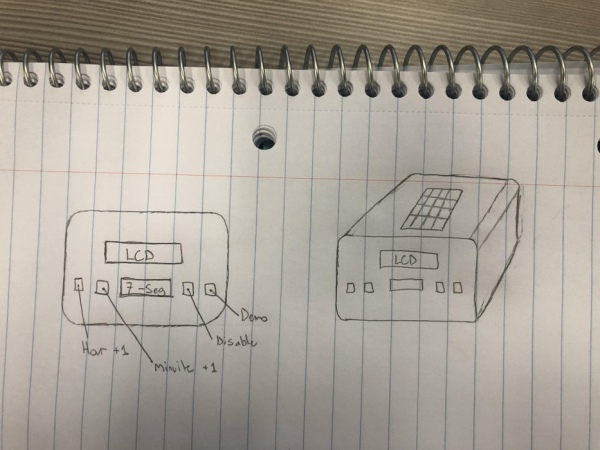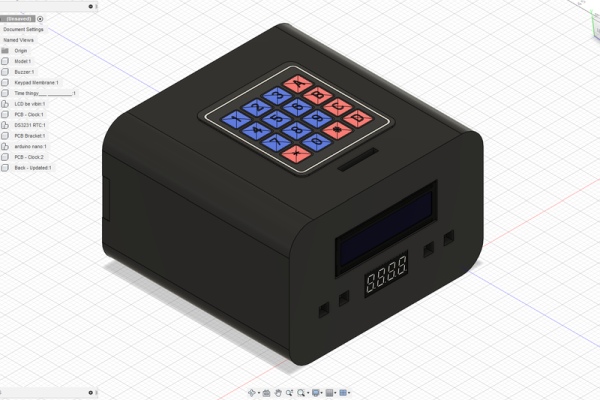The inspiration for this project was the dreadfully painful waking up process in the morning. And now that school is starting back up I had to get off of the summer schedule where you could get away with not waking up at the crack of dawn. Often times I’d find myself snoozing my alarm clock over and over in a haze before even realizing it. The intent of this design is to make sure you’re somewhat awake before the noise goes away and you can go back to sleep.

The concept behind this project is an alarm clock that needs to be joggled or shaken to snooze – then a randomly generated math question must be answered to kill the alarm for good. Obviously it must also function as a clock that can keep time and have some way to set an Alarm.
Supplies
3D Printer & filament
Arduino Nano
I2C LCD display
4 Pushbuttons
7-Segment Display
LIS331 Adafruit Accelerometer
DS3231 Real-Time-Clock
Piezo Buzzer
3x 4.7k resistors
4x 1k resistors
Step 1: Design Ideas

I knew I didn’t really want a boxy design for the alarm clock. I also realized a super curved design wouldn’t allow for the room needed for all of the components. I settled on a rounded design that I thought would look mildly appealing.
Step 2: Fusion 360 CAD Model

With a general design in hand all that was left was to transfer it into fusion 360. I had to measure the electrical components to get the correct spacing for the holes. The back plate I designed just utilized little stopping tabs and a friction mount – it ended up working very well.
Step 3: Electronics Prototyping

Before I threw all of the components into a box all soldered together I made sure everything worked and was programmed while on a breadboard. This let me easily debug as I was working.
Step 4: Coding

I’ll attach the source code here. I have a general diagram of how the code interacts with certain subroutines. There are some things that need to run all the time, or at least most of the time. Things like setting the alarm set time, display, or the actual time. Now when the alarm actually goes of it sets of a chain of events, first the accelerometer for the snooze detection then random questions are generated & displayed and finally the answer verification starts running to determine if the answer is correct.
In this project I ran the keypad connections through a series of resistors and connected the inputs to the ends of each one so I could read a unique analog output for each button press. This allowed all of the keypad wires to be reduced to a single one.
This was one of my first coding projects and it was a lot of fun.
Note: to use the Arduino sketch all the files need to be dropped into a folder called ‘Main7’ and as the name implies that’s the main sketch that includes the setup and void loop.
Step 5: Construction

The big hurtle with the construction is soldering everything together, the 3D prints are pretty much good to go except some hot glue and a few screws. The soldering isn’t too bad but I certainly made some rookie mistakes while soldering which caused the death of an accelerometer and the re-soldering of many wires that fell apart (solid core wires work a lot better).
Step 6: Demo
Source: An Alarm Clock (but It Is Harder to Turn Off)
